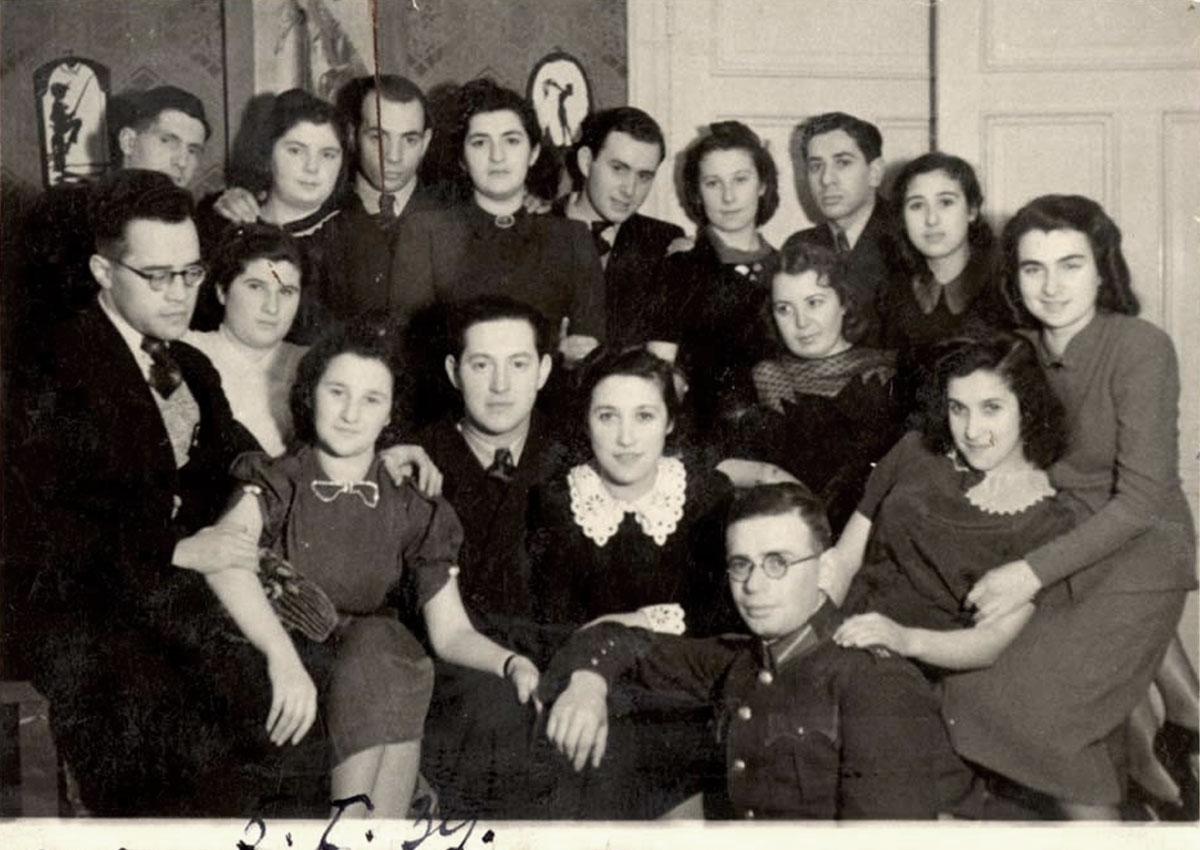On the eve of the Holocaust, some 43,000 Jews lived in Riga, constituting about one ninth of the city's residents and about half of Latvian Jewry. Riga was the political and cultural center of Latvian Jewry, with Jewish schools that taught in Hebrew, Yiddish, Russian and German, training courses for kindergarten teachers, a Yeshivah, theater, hospitals, welfare organizations and three daily Yiddish newspapers.
On 1 July 1941, the Germans occupied Riga. Thousands of Jews managed to leave the city with the Red Army's evacuation, but Jewish refugees who had escaped to Riga from other places were trapped there. On the first day of the occupation, units of Latvian volunteers began to imprison Jewish men. After days of torture and abuse, the Jewish prisoners were murdered in the adjacent Bikerniki forest, along with thousands more Jewish men. Only doctors and some craftsmen were released. Other Jews were seized for forced labor, were abused, thrown out of food lines and refused treatment in hospital. Many were evicted from their apartments, which were handed over to Germans, and their money, possessions and valuables were confiscated.
On 4 July, members of the Pērkonkrusts fascist Latvian organization torched Riga's central synagogue, the "Chor-Shul", and the other synagogues. Only one remained standing, thanks to its proximity to Latvian homes.
By October 1941, anti-Jewish decrees had been issued: property was confiscated, Jews were forced to register and to wear a Star of David, they were forbidden from using public transport, walking on the sidewalks, visiting public places, studying in any educational institutions, and working in the free professions (except for doctors, who were only allowed to treat Jews). Ritual slaughter was not permitted, and food was rationed. On 25 October, some 30,000 Jews were confined in the ghetto established in the city. The Council of Elders (Ältestenrat) headed by Michael Elyashov, the Jewish police headed by Michael Rosenthal and council departments attempted to improve the living conditions in the ghetto. They operated a hospital, clinic, pharmacy, old-age home and other services. Thousands of men, and about one thousand women had jobs, some of them outside the ghetto.
In November 1941, Himmler ordered Friedrich Jeckeln, a senior SS officer, to liquidate the ghetto and murder all of Latvian Jewry. By 7 December, 25,000 Riga Jews had been murdered in the Rumbula forest. 4,000 Jewish men and several hundred women seamstresses were left in Riga. The Germans filled the emptying ghetto with 16,000 Jews deported from Germany, Austria and Czechoslovakia. This new ghetto was called the "German Ghetto".
In the old ghetto, the Jews set up a clandestine grocery store and bakery, and established a school and kitchen for the few children that remained. In October 1942, the Germans discovered the underground activities taking place in the ghetto and in reprisal, murdered approximately 100 Jewish sick, disabled and elderly people, and all the Jewish policemen. In January 1943, the two ghettos were consolidated. In the summer of 1943, the Germans sent many of the ghetto inmates to the Kaiserwald labor camp and other labor camps. By December, the ghetto had been emptied of Jews.
In 1944, with the approach of the Red Army, the Germans sent groups of Jewish men to open the mass graves and burn the corpses, after which they themselves were murdered. In July 1944, the Red Army reached the borders of Latvia. The Germans began to murder the Jewish prisoners in Kaiserwald and to send many others to concentration camps outside Latvia, mainly to Stutthof, near Danzig.
On 13 October 1944 the Red Army liberated Riga. After liberation, some 150 Jews, including children, emerged from their hiding places.
Yad Vashem Photo Archives, 5476/24







